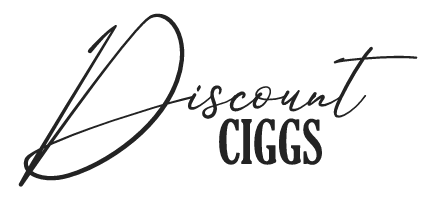Portrayal of Smoking in Comics and Graphic Novels
Ever observed the frequency of characters in comics or graphic tales shown with cigarette smoke or cigar? Picture the introspective detective, a cigarette poised between his fingers, or a cowboy leisurely puffing on his cigar. Over the years, the act of smoking has become a cornerstone in visual storytelling. One can't help but wonder about the motivation behind such a consistent depiction. Let's delve further into this intriguing narrative thread.
Introduction to Smoking in Graphic Narratives
Early depictions and origin stories
In earlier times, when comics were budding in the world of entertainment, society held a contrasting view on smoking. It was seen as an emblem of elegance and adulthood. Within the pages of these illustrated tales, the act of smoking was not just a casual detail. It was effectively employed to portray characters with a sense of age, defiance, or insight.
Shifting societal views on smoking
With the passage of time, awareness regarding the detrimental health effects of smoking grew significantly. However, its representation in the realm of comics persisted without much alteration. One might ponder, is it merely the dramatic aesthetics of a smoke cloud that makes it indispensable, or is there a more profound rationale behind it?
Iconic comic characters known for their smoking habits
The Western hero: Cowboys and cigars
Visualize a cowboy – he exudes a raw, unrefined charm, right? Most likely, he's got a cigar in hand. Comics set in the vast expanse of the Wild West frequently depicted their protagonists enjoying a smoke, a symbol of their indomitable spirit and grit.
The flawed detective: A cigarette as a thinking tool
Numerous noir-themed comics showcased detectives, lost in contemplation, cigarettes poised between their fingers. This wasn't a mere prop or background detail; it became an intrinsic aspect of their persona. Beyond its physical presence, the cigarette underscored their sharp reasoning prowess and, at times, highlighted their inner conflicts and dilemmas.
The mysterious femme fatale
Imagine a woman, enshrouded in intrigue and danger, her allure magnified as she exhales a plume of smoke. This imagery deepened the layers of her mystique, intertwining sensuality with an undertone of peril.
Themes and narratives revolving around tobacco in graphic storytelling
Symbolism of smoke: Power, mystery, and transition
In the realm of graphic storytelling, the depiction of smoke carries a profound symbolic resonance. The subtle wisps and dense clouds that fill the pages are not just mere visual elements. They convey a myriad of meanings, often teetering between the overt and the subliminal. Central to these meanings is the concept of transition. Whether it's a transformation in the plot or an evolution in a character's journey, the emergence of smoke signifies change. It's a powerful device, suggesting that something pivotal is about to unfold, catching the reader's anticipation.
Furthermore, beyond its representation of change, smoke in graphic narratives also embodies power and mystery. A character shrouded in or surrounded by smoke often exudes an aura of dominance, perhaps hinting at their concealed strengths or intentions. Simultaneously, this very imagery is drenched in enigma. The unpredictable dance of smoke, its ability to obscure and mystify, translates into the narrative as an element of suspense. It sets the tone for unexpected revelations, ensuring that the audience remains engaged, ever curious about the story's unfolding intricacies.
Tobacco as a plot device
In the expansive world of graphic storytelling, elements are rarely incorporated without intention. Among these, tobacco stands out not just as an incidental detail but often as a pivotal narrative tool. While at first glance, a cigarette or cigar may seem like a mere accessory, its presence can be integral to the development of the storyline. In certain contexts, such as a gripping detective tale, the tobacco product isn't merely a device for relaxation or a symbol of sophistication. Instead, it can be as crucial as a hidden clue, an element that drives the story forward and serves as a linchpin around which the mystery unravels.
Moreover, tobacco in graphic narratives can serve as a profound reflection of a character's psyche. A solitary figure lost in thought, puffing away at a cigarette, can offer readers a window into their internal conflicts, dilemmas, and vulnerabilities. Here, the act of smoking transcends its physicality to become an emblem of inner turmoil, introspection, or even a desperate quest for solace. As stories unfold, the recurring motif of tobacco not only adds depth to the characters but also ensures that readers are continuously engaged, deciphering the layers and nuances embedded in each smoke trail.
Representing societal views through characters' habits
Graphic narratives, often reflecting the zeitgeist of their times, provide a unique mirror to societal values and shifts. As such, the portrayal of tobacco in these stories has historically been more than mere artistic choice; it serves as a barometer for societal attitudes. With the changing perceptions about smoking over the decades, comic narratives too underwent a transformation. Initially, when society viewed smoking with a mix of acceptance and admiration, characters unabashedly flaunted their tobacco habits, symbolizing coolness, rebellion, or maturity.
However, as awareness about the health implications of smoking became more widespread, and societal attitudes shifted towards caution and skepticism, this change was palpably felt in the world of graphic storytelling. Characters, once icons of smoking's allure, began to wrestle with the habit, attempting to quit. Their struggles often mirrored the real-world challenges faced by many trying to break free from the addiction. Furthermore, younger characters were depicted being cautioned about the perils of smoking, echoing society's growing concern for its younger generation. This evolution in portrayal not only signifies the medium's adaptability but also its role in shaping and reflecting public opinion.
Impact on readers and popular culture
The allure of the "cool" factor
The realm of graphic narratives, with its vivid imagery and compelling characters, has always wielded considerable influence over its readers, particularly the impressionable youth. One of the most iconic visuals that emerged from this medium is the image of a character elegantly holding a cigarette or a cigar, exuding an aura of allure and sophistication. These characters, often rebellious, mysterious, or mature, were crafted to embody the very essence of 'cool'. Such portrayals weren't merely artistic choices; they were powerful statements that imprinted on the minds of readers, leaving an indelible mark on their perceptions.
For many young readers, these images became synonymous with adulthood, rebellion, and a certain charismatic allure. The repeated association of tobacco with such attributes, consciously or subconsciously, molded their understanding of what it meant to be 'cool'. This perception was not isolated to the world inside the pages. It spilled over, influencing popular culture and shaping societal views on smoking. The impact was so profound that many began to view the act of smoking as a rite of passage into adulthood or to assert their individuality. In essence, the line between fiction and reality blurred, underscoring the potent influence of graphic storytelling on shaping cultural norms.
The controversy and influence on young readers
The profound impact of comics on popular culture cannot be understated. As a powerful medium of storytelling, they have the unique ability to shape and reflect societal views. However, with great power comes great responsibility. One of the most contentious issues surrounding comics has been their role in the glamorization of smoking. Iconic characters, swathed in billowing clouds of smoke, became emblematic of a certain rebellious charm, influencing countless young readers to view smoking as a desirable, even aspirational, activity. This romanticization of tobacco use, often without illustrating its detrimental health impacts, drew many young readers into believing that the act was synonymous with sophistication and maturity.
Yet, as the harmful effects of smoking became more widely understood and accepted, there was a growing public outcry against such positive portrayals in graphic narratives. Critics argued that comics, given their vast young readership, had an ethical obligation to portray smoking in a more responsible light. They contended that presenting smoking as glamorous was misleading and could potentially steer impressionable readers towards picking up the habit, unaware of its dire consequences. This controversy ignited fierce debates among creators, readers, and health advocates about the ethical implications of such portrayals in comics. The discourse highlighted the tension between artistic freedom and social responsibility, compelling many within the industry to introspect and reevaluate their approach to the subject.
The changing landscape: Recent trends in portrayal
The rise of anti-smoking campaigns in comics
The evolving world of graphic narratives has always mirrored societal shifts, reflecting changing values and priorities. In recent times, as health concerns and societal disdain for smoking amplified, comics too began to witness a transformative change in their portrayal of tobacco. Recognizing the profound influence they wielded, especially among younger demographics, a wave of responsibility surged through the industry. No longer were the smoky frames exclusively associated with coolness or rebellion; there was a palpable shift in the narrative. This change was driven by both a moral responsibility and a response to the growing voices of dissent against glamorizing smoking.
Several forward-thinking comic creators and publishers took the initiative to integrate anti-smoking messages into their stories. It was a commendable step towards countering the previously established norms. Iconic characters, once seen as emblems of the smoking culture, were now depicted grappling with the challenges of nicotine addiction, showcasing both their vulnerabilities and their resolve. Concurrently, new storylines emerged that highlighted the health risks and the societal repercussions of smoking. This shift wasn't just about omitting cigarettes or cigars from frames; it was about consciously educating readers, imparting lessons interwoven with entertainment. The transition signaled a more socially conscious era in graphic storytelling, reinforcing the medium's potential as a powerful tool for change.
Graphic narratives on the journey of quitting
The realm of comics and graphic novels, historically known for its escapism and larger-than-life characters, has begun to mirror more intimate and personal realities. One of the poignant themes emerging in contemporary graphic storytelling is the profound struggle of individuals grappling with tobacco addiction. These narratives, rather than placing characters on pedestals, have brought them down to the relatable plane of everyday challenges, especially the battle to quit smoking. Such stories don't merely aim to entertain; they resonate deeply with readers, providing both a sense of camaraderie for those on a similar path and enlightening others about the intricacies of addiction.
These graphic tales offer a raw, unfiltered look into the psyche of characters besieged by their cravings, laying bare the internal tug-of-war between desire and the understanding of its detrimental effects. Yet, amid the grit and turbulence of these tales, there's a prevailing undertone of optimism. They underscore the resilience of the human spirit, depicting characters who, despite stumbling, persevere in their quest to break free. Such narratives are more than just stories; they act as beacons of hope for many, illustrating that the road to quitting might be fraught with hurdles but is not insurmountable. In choosing to spotlight this journey, the world of graphic storytelling has expanded its horizons, showcasing that comics can be both a mirror to society's challenges and a catalyst for change.
Conclusion
In graphic storytelling, the depiction of smoking has evolved alongside societal attitudes. Once a mere character-defining tool, it now encapsulates broader societal beliefs. The way comics present smoking offers a unique lens into societal shifts and concerns. For readers, grasping the backdrop against which these depictions emerge is crucial. Such understanding enhances appreciation for the narrative, blending artistry with societal commentary. This duality underscores the profound impact and responsibility of the graphic medium. As enthusiasts, we should be mindful of both the art and the message it conveys.
FAQs
Why was smoking frequently portrayed in early comics?
Early comics mirrored society's view of smoking as a sophisticated and adult activity. It also added layers to characters, portraying maturity, rebelliousness, or wisdom.
Did comics influence young readers to smoke?
While comics did glamorize smoking, it's a multifaceted issue. Many factors influence a person's decision to smoke, but the depiction in popular culture, including comics, can't be denied.
How have recent comics addressed the smoking issue?
Modern comics have become more conscious, with some incorporating anti-smoking campaigns, while others focus on the journey of quitting.
Are there comics centered around the theme of quitting smoking?
Yes, several graphic narratives delve into the challenges of quitting, offering readers insights into the complexities of addiction and hope for recovery.
Do comics today still depict characters who smoke?
While not as prevalent, smoking is still depicted in comics, but often with added layers of narrative or as a comment on the habit itself.
References
- Canadian Pediatric Society: www.cps.ca
- REUTERS: reuters.com
- World Health Organization (Tobacco Free Initiative): www.who.int



